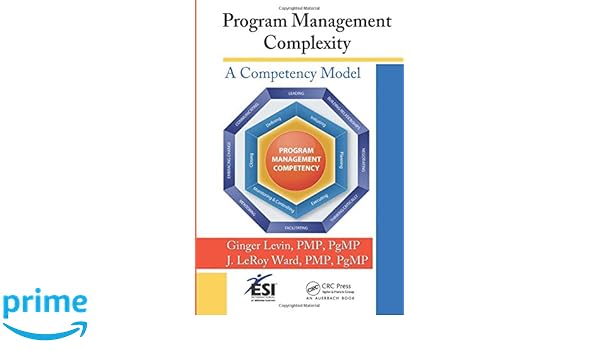
Management Institute (PMI), such as, OPM3 and P3M3. This audit measures project. Services, for example environment impact assessment processes. Rentals received and project management fees contribute to CDC's self-generated revenue over and above government grants. Actual 2013/14.
The Organizational Project Management Maturity Model or OPM3® is a globally recognized best-practice standard for assessing and developing capabilities in executing strategy through projects via Portfolio Management, Program Management, and Project Management. It is published by the (PMI). OPM3 provides a method for organizations to understand their processes and practices, and to make these processes capable of performing successfully, consistently, and predictably. OPM3 helps organizations develop a roadmap that the company will follow to improve performance. The Second Edition (2008) was recognized by the (ANSI) as an American National Standard (ANSI/PMI 08-004-2008). The Third Edition was published in 2013.
Contents • • • • • • • History [ ] In 1998, PMI chartered a named the OPM3 Program to develop an Organizational Project Management Maturity Model to be a global standard for (OPM). During development, part of that team of volunteers analyzed twenty-seven existing models and deployed surveys repeatedly to 30,000 practitioners. The concept of maturity model had been popularized through the or CMM for software development that was created by the (SEI) of between 1986 and 1993. The volunteer OPM3 model review team reviewed CMM and other models to understand the scope of each model, capabilities of each model, methodology for conducting assessments against each model, each model's structure, and each model's implementation procedures. The analysis concluded that existing models left many important questions about Organizational Project Management (OPM) maturity unanswered and that the team should proceed with the development of an original model through the sponsorship of PMI.
The project team used a brainstorming technique to facilitate the identification of elements of Organizational Project Management (OPM) in such a way that no single person could dominate the process. Participants were invited to suggest elements that constituted maturity in OPM. Such elements were refined as testable capability statements, consolidated, and eventually organized into groups called OPM3 best practices. Each OPM3 best practice statement denotes a group of capability statements. OPM3 capabilities are the testable statements of the OPM3 standard (not the OPM3 best practices).
To ensure alignment to PMI's standard, processes from this PMI standard were incorporated in the first edition of OPM3 (see Contents below) published in December 2003. Upon release of OPM3, the user community expressed interest in the development of supporting products and services for companies that were adopting the model. PMI responded by developing OPM3 Online, a web-based database that allowed users to search OPM3 best practices, conduct rudimentary assessments against the model, and serve as a reference when implementing improvements, but PMI later retracted this tool. Shortly thereafter, PMI also created the OPM3 ProductSuite, a set of certifications and software tools that enabled service providers with more powerful diagnostic and improvement tools, though PMI then retracted these as well. Following PMI's standard development lifecycle, the OPM3 Second Edition was published in December 2008 to update the standard based on experience in the field and align it with other PMI standards.
The Second Edition was subsequently superseded by the Third Edition in 2013 to align with the Fifth Edition of A Guide to the Project Management Body of Knowledge, the Third Edition of the Standard for Program Management, and the Third Edition of the Standard for Portfolio Management. PMI standards, including OPM3, are also ANSI standards. Contents [ ] OPM3 covers the domains of, the systematic management of projects, programs, and portfolios in alignment with the achievement of strategic goals. The domains are Project Management, Program Management and Portfolio Management. OPM3 uniquely integrates into one maturity model these three domains and over one hundred organizational enablers that are assigned to 17 categories. OPM3 offers the key to making (OPM) capable with three interlocking elements: • Knowledge - Learn about hundreds of (OPM) Best Practices.
• Assessment - Evaluate an organization’s current capabilities and identify areas in need of improvement. • Improvement - Use the completed assessment to map out the steps needed to achieve performance improvement goals. Microstation V8i Crack. As with other PMI standards, OPM3’s intent is not to be prescriptive by telling the user what improvements to make or how to make them.
Rather, OPM3 provides guidelines regarding the kinds of things an organization may do in order to achieve excellence in. Adoption [ ] OPM3 has been adopted by leading organizations in outsourcing, foreign relations, telecommunications, municipalities, applied science laboratories, NGO’s, hospitals, cable television providers, American military intelligence, crisis response, financial services, terrestrial and space born electronics, mega-infrastructure operations, regional governments, rapid transit, risk retention, mobile technology manufacturers, enterprise application giants, and many others across North and South America, Europe, the Middle East, and Asia. Benefits [ ] OPM3 is designed to provide a wide range of benefits to organizations, senior management, and those engaged in project management activities. Some of the benefits derived from using OPM3 are as follows: • Strengthens the link between strategic planning and execution, so project outcomes are predictable, reliable, consistent, and correlate with organizational success. • Identifies the best practices which support the implementation of organizational strategy through successful projects.